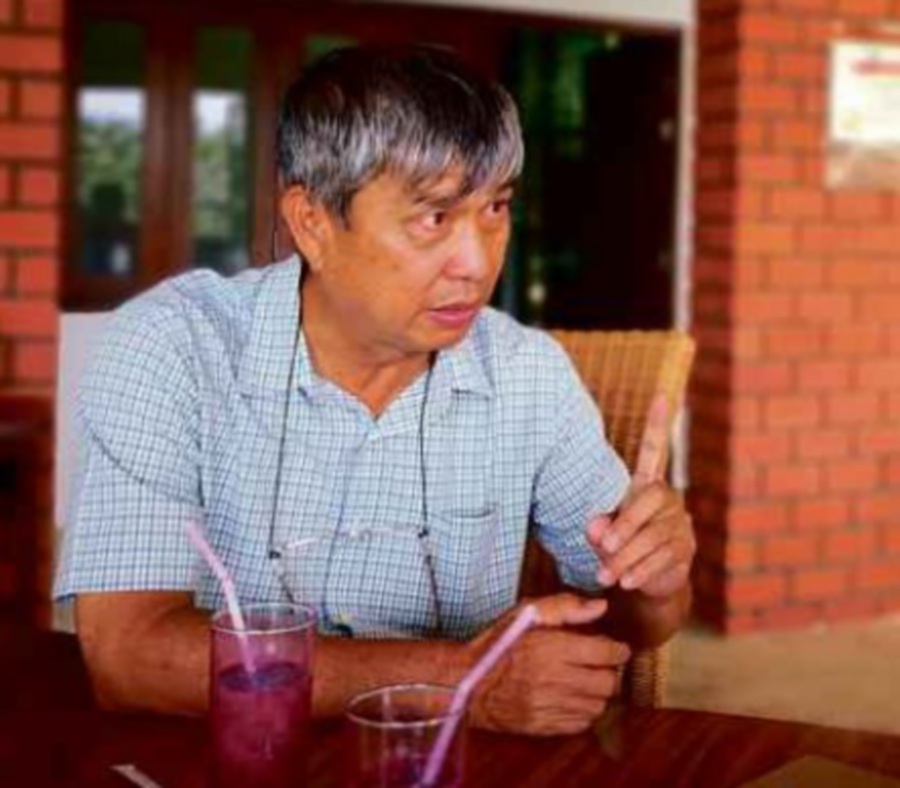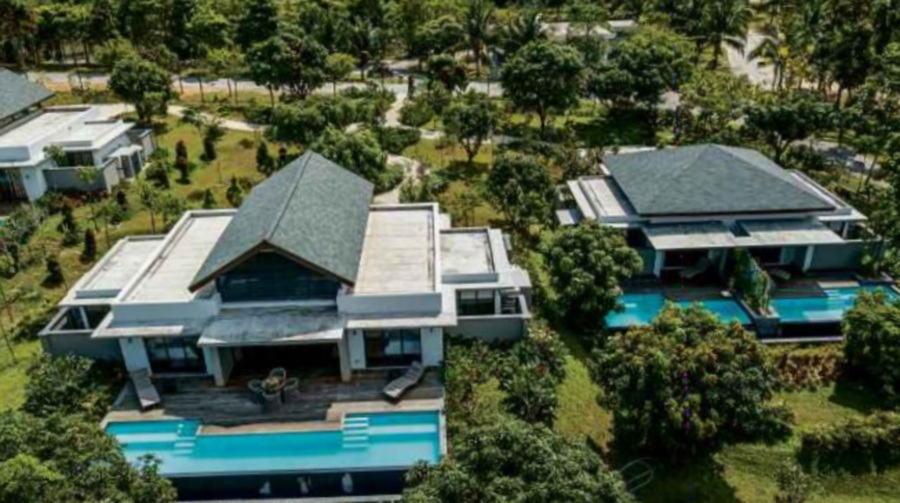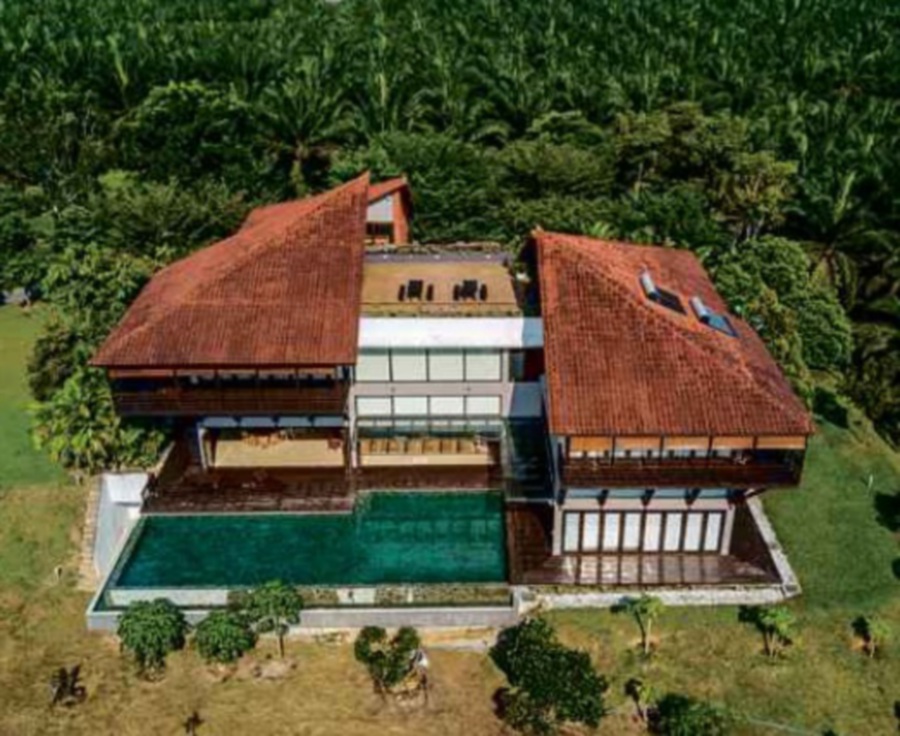GAMBANG
in Pahang is famous for one attraction, — the Bukit Gambang Resort City
(BGRC) which is nestled within 294ha of lush secondary jungle.
Developed by Sentoria Group Bhd, BGRC is one of the largest integrated resort cities in Malaysia.
 Besides luxury villas and hotel rooms, BGRC offers attractions such as a water park and the largest safari park in the country.
Besides luxury villas and hotel rooms, BGRC offers attractions such as a water park and the largest safari park in the country.
Another notable thing about Gambang is that it has been developed as an education city, starting with the construction of Kolej Universiti Kejuruteraan dan Teknologi Malaysia, now known as Universiti Malaysia Pahang.
Others were Kolej Matrikulasi Pahang and Kolej Komuniti Paya Besar, as well as a branch of Universiti Teknologi Mara and a pre-university campus of International Islamic University Malaysia.
Gambang is also famous for sports school Sekolah Sukan Malaysia Pahang and Mokhtar Dahari National Football Academy, named after late football legend Mokhtar Dahari.
The academy is the biggest of its kind in Malaysia and was set up to produce world-class football players. The first phase was developed in 2014 and comprised a building and five fields Phase 2 was implemented through the National Football Development Programme at a cost of RM85 million and involved the construction of 10 football fields and other facilities, such as a physiotherapy centre.
 Other than that, Gambang is considered a small and old town with nothing much to do.
Other than that, Gambang is considered a small and old town with nothing much to do.
There is hardly any new housing project or shop.
However, there is a hidden gem called Mangala Resort & Spa, owned by Franky Group of Companies, which is planning another bigger development.
LUXURY HOMES
Franky Group is owned by Datuk Franky Chua Goon Eng, a low-profile developer from Klang, Selangor. The group started as Franky Construction Sdn Bhd in 1981. Over the years, it diversified into mining, property development, material supply, hospitality and plantation.
 To
date, the group’s construction business has registered more than RM3
billion of work done. This included mining, highways, road works, oil
and gas installation, building construction, infrastructure, water
supply works and drainage and sewerage works.
To
date, the group’s construction business has registered more than RM3
billion of work done. This included mining, highways, road works, oil
and gas installation, building construction, infrastructure, water
supply works and drainage and sewerage works.
Now, the group wants to build more properties in Gambang, a place close to Chua’s heart.
“It is true, there is nothing much that one can do in Gambang, but this sure is the place to relax and rejuvenate. It is a place for healing! My group owns 162ha land and we have used up almost 121ha for an oil palm plantation and 26ha for the Mangala Resort & Spa.
“We have more land and we intend to develop luxury residences comprising villas and low-rise apartments.
It is under planning at the moment,” he told NST Property.
Construction of the villas and apartments are expected to start in one to two years.
Chua estimates the gross development value (GDV) to be RM250 million, depending on the number of units.
“We have a 20ha site to build the villas and apartments. It is a huge parcel of land and there will be space to for another luxury development in the future.
“We believe Gambang is ready for luxury homes. A number of people have been talking to us. They want to live in a serene and tranquil environment when they retire.
“Some are also looking for a holiday home. Gambang is only a two-hour drive from Kuala Lumpur and less than an hour from Cherating beach,” he said.

DEVELOPER WITH FORESIGHT
It is rare to come across a property developer who takes over a barren former mining land in a small and unpopular village to build a resort and houses.
The developer must either be bold or has good foresight. Otherwise it would not make business sense to spend a huge amount of money on the land, development and marketing campaign to sell the properties.
It is common for developers to hunt for prime or strategic land. If they have to pay a premium, they will do it because it is highly likely they will make a fortune from the development.
But this was not the case for Chua. He took over the barren former mining land in 2002 and spent a lot of money transforming the vast undulating empty topography into a breathtaking nature-inspired resort and oil palm estate.
“Nothing could grow here except oil palm trees and I invested a lot of money.
We converted about 121ha into an oil palm plantation. We brought in top soil and compost to improve the soil composition.
Otherwise, nothing will grow. Barren land has sand or rocks. It is almost like desert land.
“As you know, tin mining activities cause a change in soil composition. It degrades the land, rendering it incapable of generating growth. We rehabilitated the land and gave it a breath of fresh air. We bought better soil, tonnes of it! We also added fertiliser regularly. The first thing we did was to plant oil palm trees and today, they are bearing fruit.
“We also planted fruit trees such as kedondong, guava, passion fruit, durian and pandan coconut and they are all producing fruits, too. The next target is to have a herb and vegetable garden,” added Chua.
Developed by Sentoria Group Bhd, BGRC is one of the largest integrated resort cities in Malaysia.

Land available for new developments surrounding Mangala Resort & Spa.
Another notable thing about Gambang is that it has been developed as an education city, starting with the construction of Kolej Universiti Kejuruteraan dan Teknologi Malaysia, now known as Universiti Malaysia Pahang.
Others were Kolej Matrikulasi Pahang and Kolej Komuniti Paya Besar, as well as a branch of Universiti Teknologi Mara and a pre-university campus of International Islamic University Malaysia.
Gambang is also famous for sports school Sekolah Sukan Malaysia Pahang and Mokhtar Dahari National Football Academy, named after late football legend Mokhtar Dahari.
The academy is the biggest of its kind in Malaysia and was set up to produce world-class football players. The first phase was developed in 2014 and comprised a building and five fields Phase 2 was implemented through the National Football Development Programme at a cost of RM85 million and involved the construction of 10 football fields and other facilities, such as a physiotherapy centre.

Franky Group founder Datuk Franky Chua Goon En
There is hardly any new housing project or shop.
However, there is a hidden gem called Mangala Resort & Spa, owned by Franky Group of Companies, which is planning another bigger development.
LUXURY HOMES
Franky Group is owned by Datuk Franky Chua Goon Eng, a low-profile developer from Klang, Selangor. The group started as Franky Construction Sdn Bhd in 1981. Over the years, it diversified into mining, property development, material supply, hospitality and plantation.

Luxury pool villas developed by Franky Group of Companies.
Now, the group wants to build more properties in Gambang, a place close to Chua’s heart.
“It is true, there is nothing much that one can do in Gambang, but this sure is the place to relax and rejuvenate. It is a place for healing! My group owns 162ha land and we have used up almost 121ha for an oil palm plantation and 26ha for the Mangala Resort & Spa.
“We have more land and we intend to develop luxury residences comprising villas and low-rise apartments.
It is under planning at the moment,” he told NST Property.
Construction of the villas and apartments are expected to start in one to two years.
Chua estimates the gross development value (GDV) to be RM250 million, depending on the number of units.
“We have a 20ha site to build the villas and apartments. It is a huge parcel of land and there will be space to for another luxury development in the future.
“We believe Gambang is ready for luxury homes. A number of people have been talking to us. They want to live in a serene and tranquil environment when they retire.
“Some are also looking for a holiday home. Gambang is only a two-hour drive from Kuala Lumpur and less than an hour from Cherating beach,” he said.

A private bungalow hidden in a 162ha oil palm plantation.
DEVELOPER WITH FORESIGHT
It is rare to come across a property developer who takes over a barren former mining land in a small and unpopular village to build a resort and houses.
The developer must either be bold or has good foresight. Otherwise it would not make business sense to spend a huge amount of money on the land, development and marketing campaign to sell the properties.
It is common for developers to hunt for prime or strategic land. If they have to pay a premium, they will do it because it is highly likely they will make a fortune from the development.
But this was not the case for Chua. He took over the barren former mining land in 2002 and spent a lot of money transforming the vast undulating empty topography into a breathtaking nature-inspired resort and oil palm estate.
“Nothing could grow here except oil palm trees and I invested a lot of money.
We converted about 121ha into an oil palm plantation. We brought in top soil and compost to improve the soil composition.
Otherwise, nothing will grow. Barren land has sand or rocks. It is almost like desert land.
“As you know, tin mining activities cause a change in soil composition. It degrades the land, rendering it incapable of generating growth. We rehabilitated the land and gave it a breath of fresh air. We bought better soil, tonnes of it! We also added fertiliser regularly. The first thing we did was to plant oil palm trees and today, they are bearing fruit.
“We also planted fruit trees such as kedondong, guava, passion fruit, durian and pandan coconut and they are all producing fruits, too. The next target is to have a herb and vegetable garden,” added Chua.
No comments:
Post a Comment